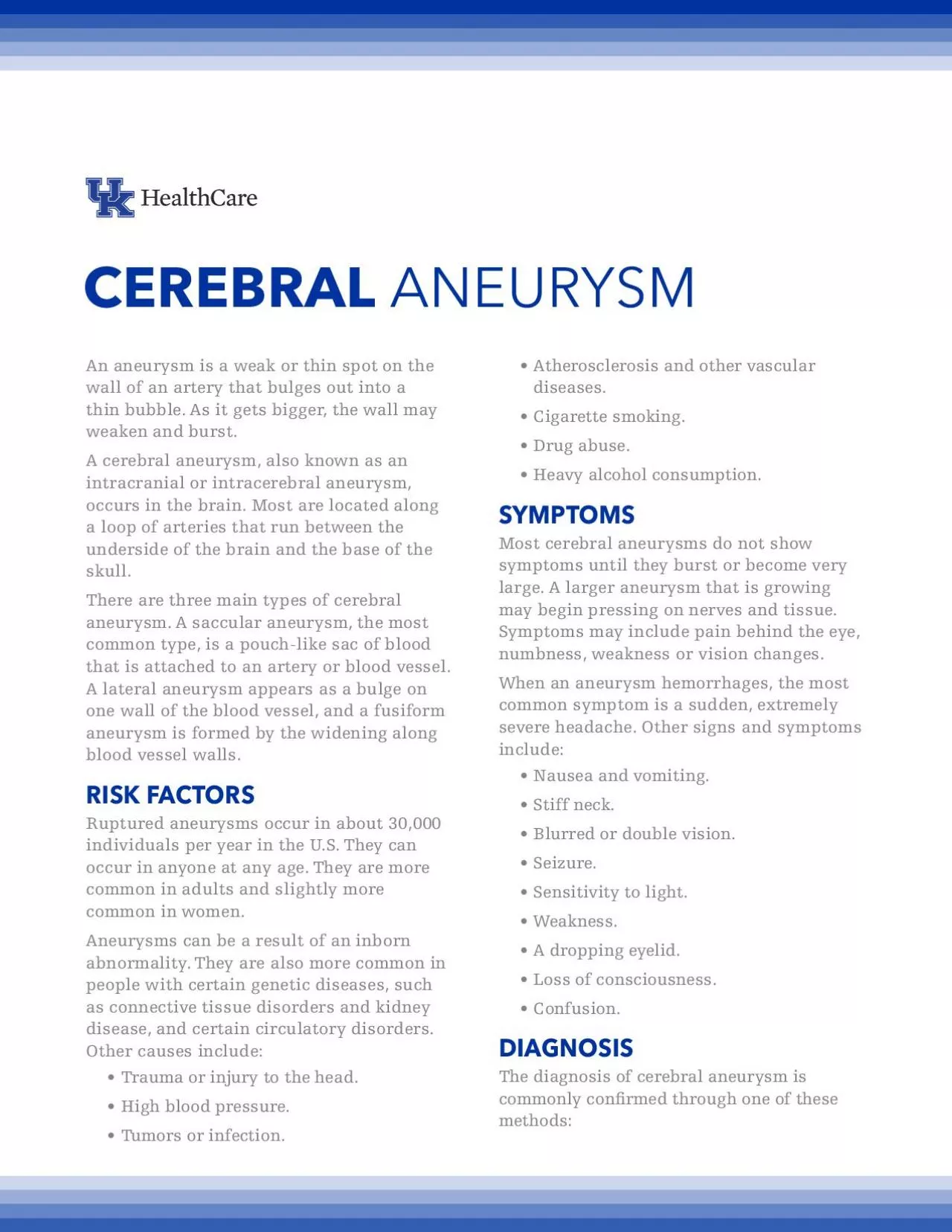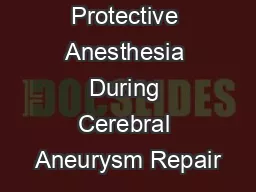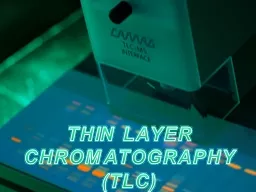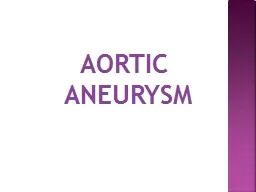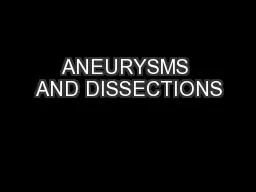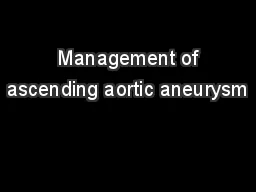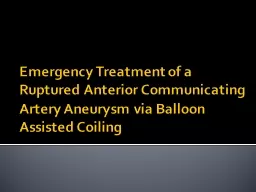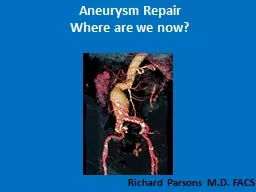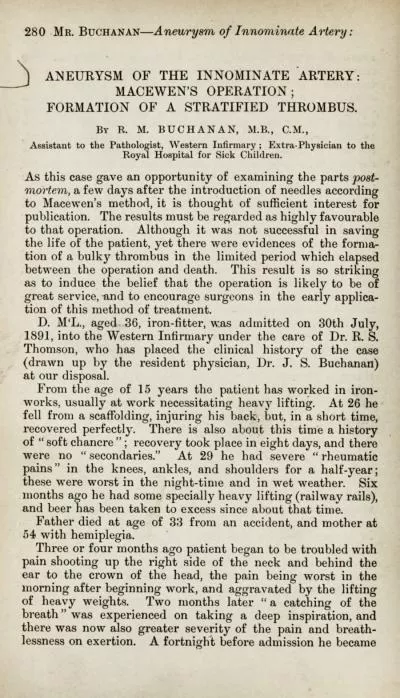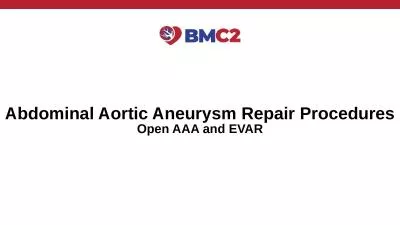PDF-CEREBRAL ANEURYSMAn aneurysm is a weak or thin spot on the wall of an
Author : williams | Published Date : 2022-08-19
Angiography This is a dye test used to analyze arteries or veins An intracerebral angiogram can identify changes in an artery or vein like an aneurysm A 30exible
Presentation Embed Code
Download Presentation
Download Presentation The PPT/PDF document "CEREBRAL ANEURYSMAn aneurysm is a weak o..." is the property of its rightful owner. Permission is granted to download and print the materials on this website for personal, non-commercial use only, and to display it on your personal computer provided you do not modify the materials and that you retain all copyright notices contained in the materials. By downloading content from our website, you accept the terms of this agreement.
CEREBRAL ANEURYSMAn aneurysm is a weak or thin spot on the wall of an: Transcript
Download Rules Of Document
"CEREBRAL ANEURYSMAn aneurysm is a weak or thin spot on the wall of an"The content belongs to its owner. You may download and print it for personal use, without modification, and keep all copyright notices. By downloading, you agree to these terms.
Related Documents

